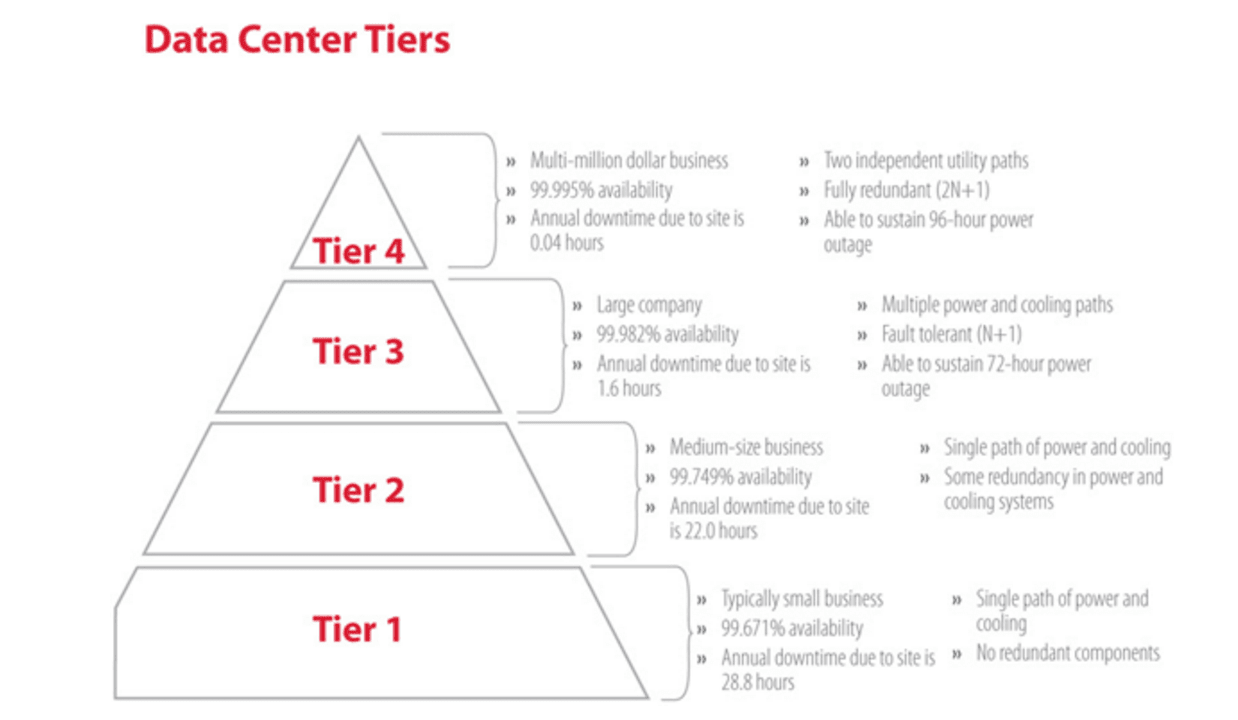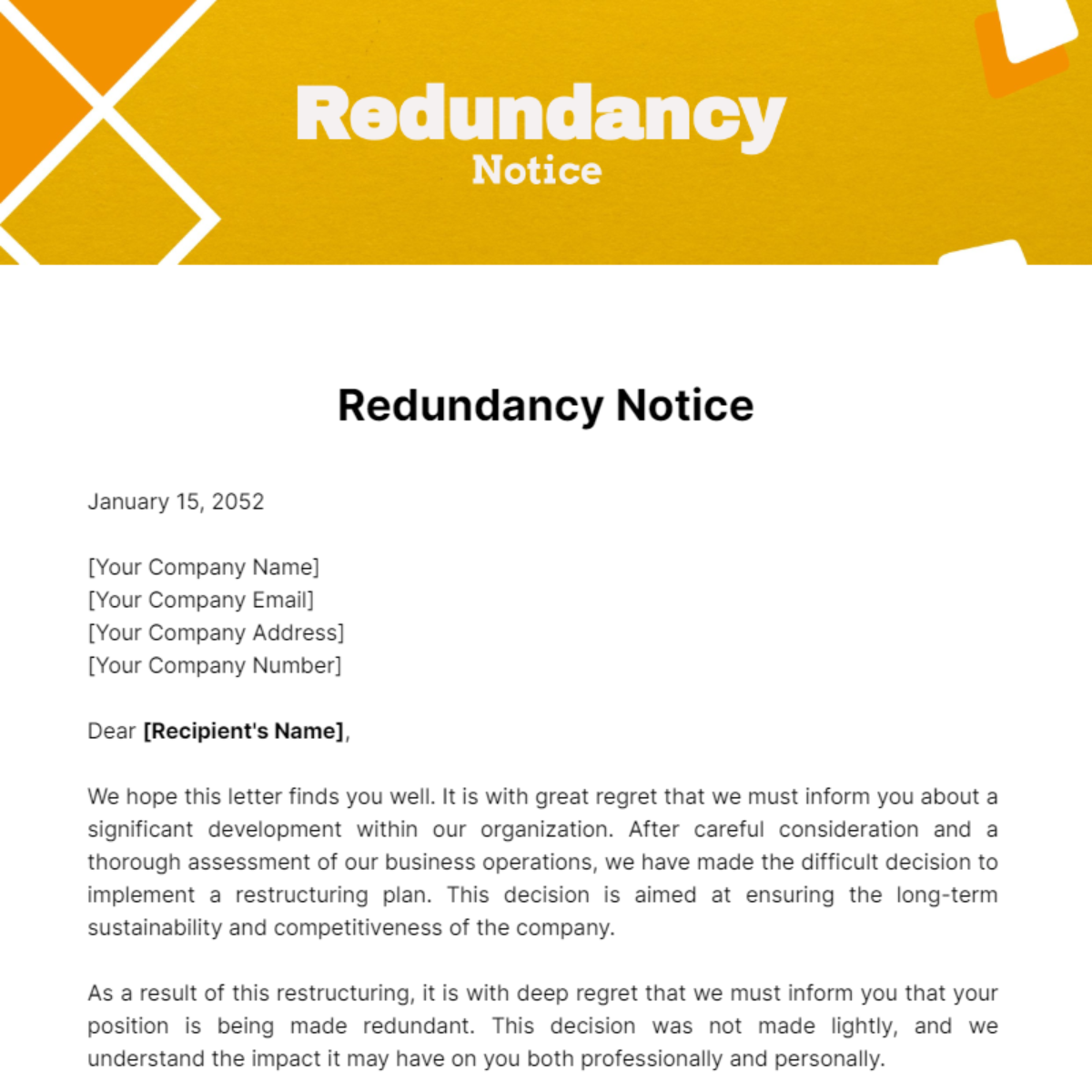Who Pays Redundancy Money? A Comprehensive Overview for Employers and Employees
Who Pays Redundancy Money? A Comprehensive Overview for Employers and Employees
Blog Article
Exploring the Operational Characteristics of Company Redundancy and Its Long-Term Sustainability

Redundancy Approaches for Organization Connection
In order to make sure uninterrupted procedures, organizations have to implement efficient redundancy methods for company continuity. Redundancy in this context describes the replication of essential components or features within a system to minimize the impact of prospective failures. By integrating redundancy approaches, organizations can enhance their resilience against interruptions brought on by various factors such as all-natural disasters, tools failings, or cyber-attacks.
One common redundancy strategy is the application of back-up systems and information storage solutions. This includes creating matches of important data and systems that can be activated in situation of a primary system failing. Furthermore, companies can establish redundant interaction networks and source of power to maintain connection and procedures during unforeseen events.
Additionally, cross-training staff members to execute multiple roles within the firm can function as a beneficial redundancy method. This makes certain that crucial tasks can still be executed also if key employees are unavailable because of health problem or other reasons. In general, reliable redundancy strategies are vital for organizations to copyright operational connection and minimize the impact of possible disturbances.
Impact of Redundancy on Business Strength
Offered the crucial function redundancy approaches play in making sure business connection, checking out the impact of redundancy on organizational durability comes to be imperative for recognizing the holistic functional characteristics of a firm. Organizational durability refers to an entity's capacity to adapt to disturbances, recover from problems, and change when needed while preserving core functions. Redundancy, when tactically executed, can substantially add to improving a company's durability when faced with unexpected challenges. By having back-up systems, employees, or processes in place, business can better endure shocks and proceed operations with minimal disruption.
In addition, redundancy can boost staff member spirits and confidence, recognizing that there are contingency plans in position to resolve unexpected circumstances. This sense of protection can cause raised productivity and an extra favorable job atmosphere. In addition, redundancy can cultivate innovation and imagination within an organization as staff members really feel equipped to take computed dangers, knowing that there is a safeguard to sustain them in instance of failure. Overall, the influence of redundancy on organizational durability is profound, shaping the long-term sustainability and success of a business.
Balancing Effectiveness and Versatility in Redundancy
Achieving an unified stability in between functional performance and adaptive versatility is a crucial obstacle in the tactical implementation of redundancy within organizations. Efficient operations are necessary for preserving efficiency and cost-effectiveness, guaranteeing that resources are made use of ideally. Nonetheless, extreme emphasis on performance alone can bring about rigidness, making it tough for companies to adjust to unforeseen changes or challenges. On the various other hand, flexibility permits companies to react nimbly to advancing circumstances, fostering development and durability. Yet, way too much versatility without a strong functional structure can lead to inefficiencies and incongruity.
To balance performance and adaptability in redundancy planning, organizations need to very carefully assess their operational needs, market dynamics, and calculated objectives. Eventually, locating the appropriate equilibrium in between effectiveness and versatility is essential for building a lasting and resistant company in the face of uncertainty.
Long-Term Sustainability Via Redundancy Planning
To make certain enduring feasibility and stability, organizations must purposefully align their redundancy preparation with long-lasting sustainability goals, thereby balancing functional effectiveness with adaptive versatility. Companies need to view redundancy not as a reactive solution to instant problems but as an aggressive technique for lasting success.

Positive Procedures for Sustainable Business Operations
How can firms proactively boost their operational sustainability for long-term success? Applying proactive procedures is necessary for firms intending to ensure lasting operations. One key strategy is to spend in technology and innovation to enhance procedures, reduce waste, and stay competitive in the market. Taking on sustainable techniques such as minimizing energy usage, lessening carbon impact, and optimizing source use can not just profit the setting yet likewise bring about get more cost savings over time.
In addition, promoting a culture of continuous enhancement and discovering within the company can enhance versatility to changing market problems and consumer needs. Motivating employee participation in decision-making processes and offering possibilities for expert growth can boost spirits, efficiency, and total performance. Establishing clear goals, checking essential performance signs, and regularly reviewing progression are important parts of proactive sustainability administration.
Working together with distributors, clients, and other stakeholders to advertise sustainable practices throughout the supply chain can produce a ripple effect of favorable influence - redundancy pay if company goes bust. By taking aggressive steps towards functional sustainability, business can develop resilience, drive development, and protect their lasting success in an ever-evolving organization landscape
Conclusion

In the realm of business monitoring, the critical release of firm redundancy stands as a crucial yet elaborate practice that necessitates a delicate equilibrium between operational efficiency and long-lasting stability. By dissecting the operational characteristics that underpin business redundancy and assessing its broader implications for organizational resilience and flexibility, a nuanced understanding of just how redundancy approaches can form the future trajectory of a view it now firm starts to unfold.Given the essential role redundancy methods play in ensuring organization connection, discovering the effect of redundancy on business durability ends up being crucial for recognizing the alternative functional characteristics of a firm. Overall, the effect of redundancy on organizational resilience is extensive, shaping the lasting sustainability and success of a firm.
In verdict, recognizing the operational characteristics of Find Out More business redundancy is vital for ensuring long-lasting sustainability.
Report this page